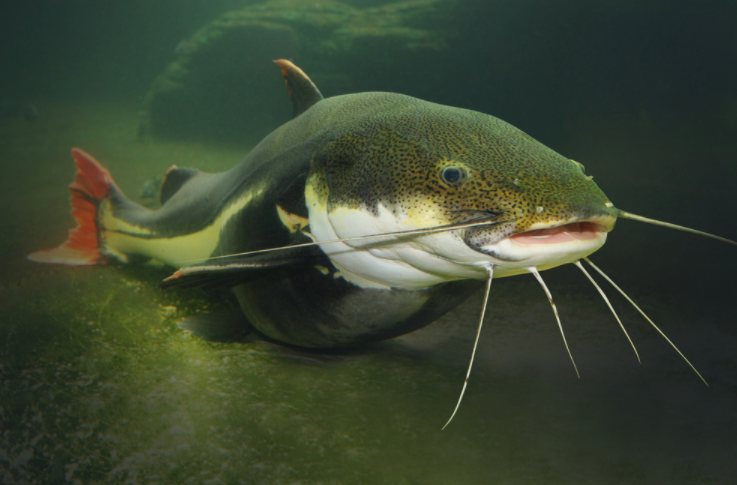Catfish: A Cat, Fish, or Both?
- Austin Chen

- Nov 20, 2020
- 3 min read
Updated: Dec 2, 2020

Introduction
When you hear the word catfish, there are two main things you think of: the animal and the verb.

Catfish are a diverse group of fish named for their prominent barbells, which give the image of cat-like whiskers. Catfish are found primarily in freshwater environments of all kinds, with species on every continent except Antarctica.Some species from the families Ariidae and Plotosidae are also found in marine environments.
Physical Features of Catfish
Catfish have no scales. All catfish, except members of Electric Catfish family, possess a strong, hollow, bony leading ray on their dorsal and pectoral fins, through which a stinging protein can be delivered if the fish is irritated. In members of the family Plotosidae (Eeltail Catfish) and of the genus Heteropneustes (Sri Lanka Stinging catfish), this protein is so strong it can put a human being in hospital if they are unfortunate enough to receive a sting.
Catfish have a sweet, mild flesh which makes them important as food fish throughout the world. Blue Catfish and Bullheads (Ictalurids) are cultivated in North America (especially in the Deep South, with Mississippi being the largest domestic catfish producer. Airbrea thing Catfish (Clariids) and Shark Catfish (Pangasiidae) are heavily cultured in Africa and Asia.
Catfish range in size and behavior from the heaviest, the giant Mekong Catfish in Southeast Asia and the longest, the Wels Catfish of Eurasia. The average size of the species is about 1.2 meters to 1.6 meters, and fish more than 2 meters are very rare. The largest specimens on record measure more than 2.5 meters in length and sometimes exceed 100 kilograms in weight.
The Wels Catfish was introduced to Britain, Italy, Spain, Greece and some other countries during the last century. The species has flourished in the warm lakes and rivers of Southern Europe. The River Danube, River Po in Italy and the River Ebro in Spain are famous for huge Wels Catfish, which grow up to 2 meters. These habitats contain plenty of food and lack natural predators.

Diet and Feeding Habit
Different Catfish species have varied feeding habits.
The Channel Catfish (Ictalurus punctatus) and Blue Catfish (Ictalurus furcatus) feed mainly at night using taste buds in the sensitive barbells and throughout the skin to locate prey. Although they normally feed on the bottom, channels also will feed at the surface and at mid-depth. Major foods are aquatic insects, crayfish, mollusks, crustaceans and fishes. Small channels consume invertebrates, but larger ones may eat fish. Contrary to popular belief, carrion is not their normal food.
The White Catfish (Ameiurus catus) eat fish as their major food, but they also eat larval aquatic insects, small crustaceans, fish eggs and aquatic plants. They may feed at night, but are not as nocturnal as other catfish.
Yellow Bullheads (Ameiurus natalis) are scavengers and prefer to feed on minnows, snails, shrimp and crayfish. They also will feed on insect larvae, vegetation and decaying organic matter. Scent and taste play a vital role in their feeding, most of which is done at night.
Brown Bullheads (Ameiurus nebulosus) are primarily bottom feeders, feeding also mostly at night. Highly sensitive barbells enable them to smell a wide variety of food such as insects, plant material, carrion, small fish, snails, crayfish, worms and leeches.
Flathead Catfish (Pylodictis olivaris) are predatory fish and will consume bass, bream, shad, crayfish and often feed on other catfish. The young rely more extensively on aquatic insects and crayfish than do the adults. Large flatheads sometime congregate where food is plentiful such as near tailraces of dams. They often feed at the surface or in shallow water at night, returning to their residence in a hole or brush pile to rest during the day. They rarely eat dead or decaying matter.
Sourced From/More Information: Images & Article 1: https://www.catfishedge.com/catfish-species-basics/ Images & Article 2: https://animalcorner.org/catfish/





Comments